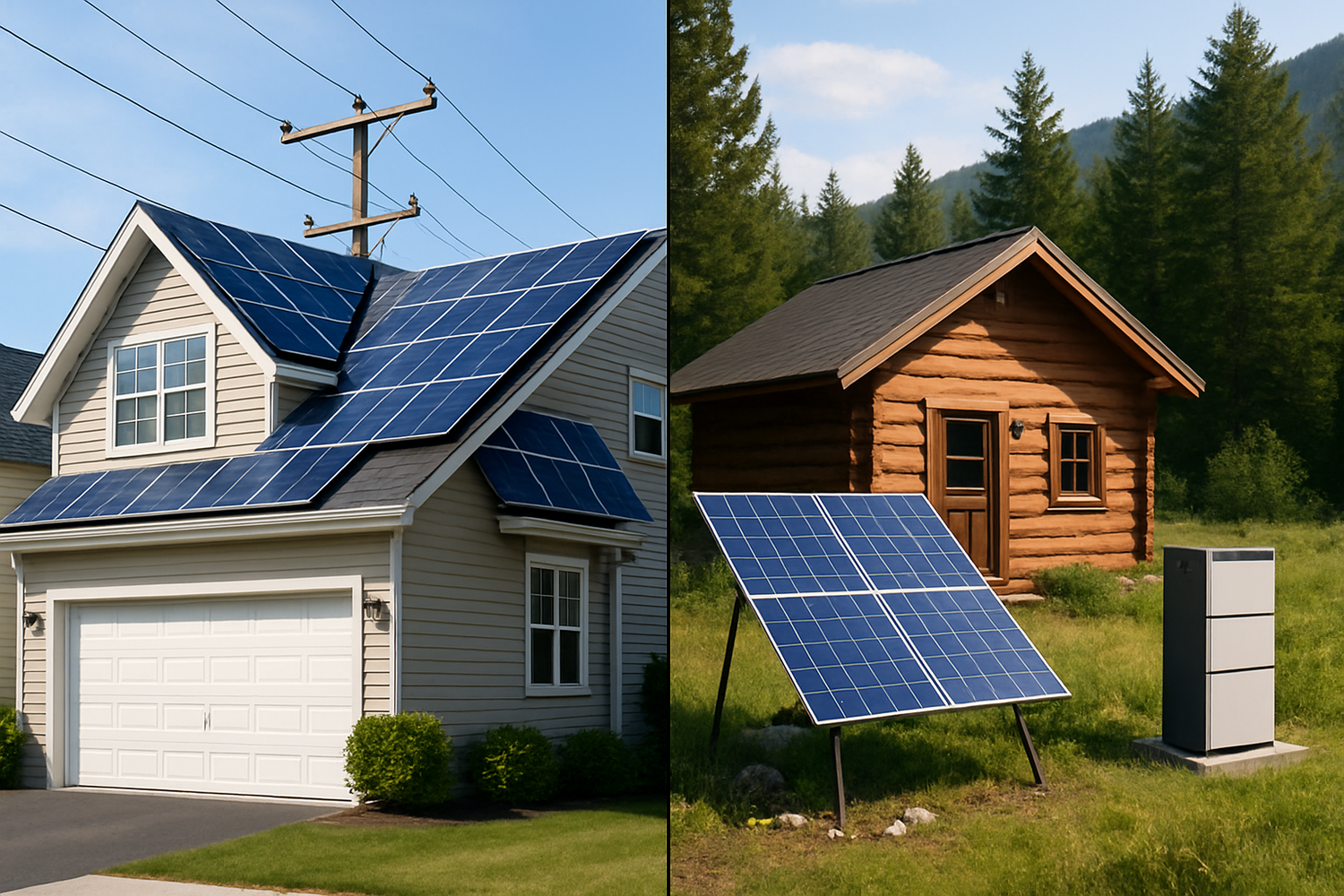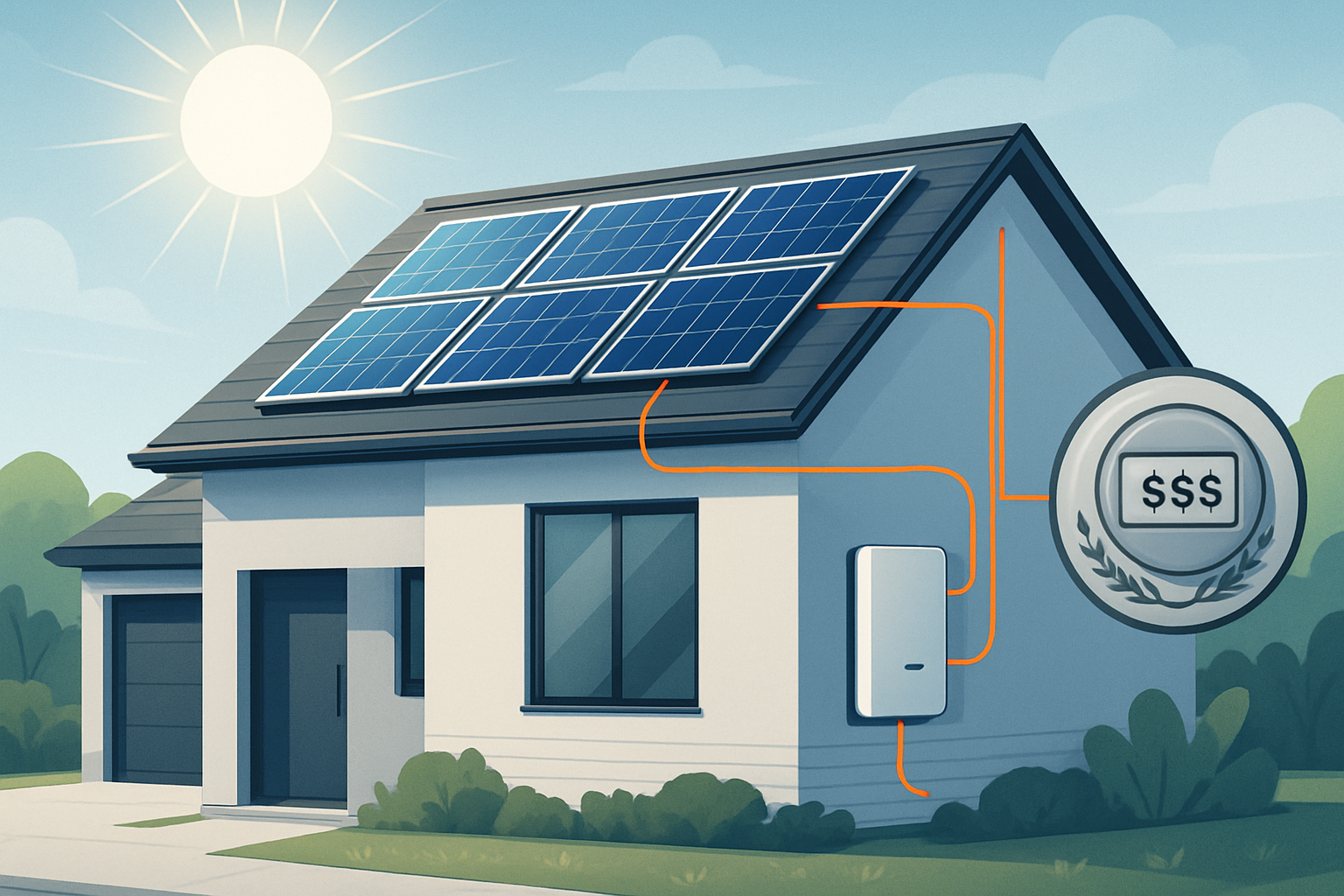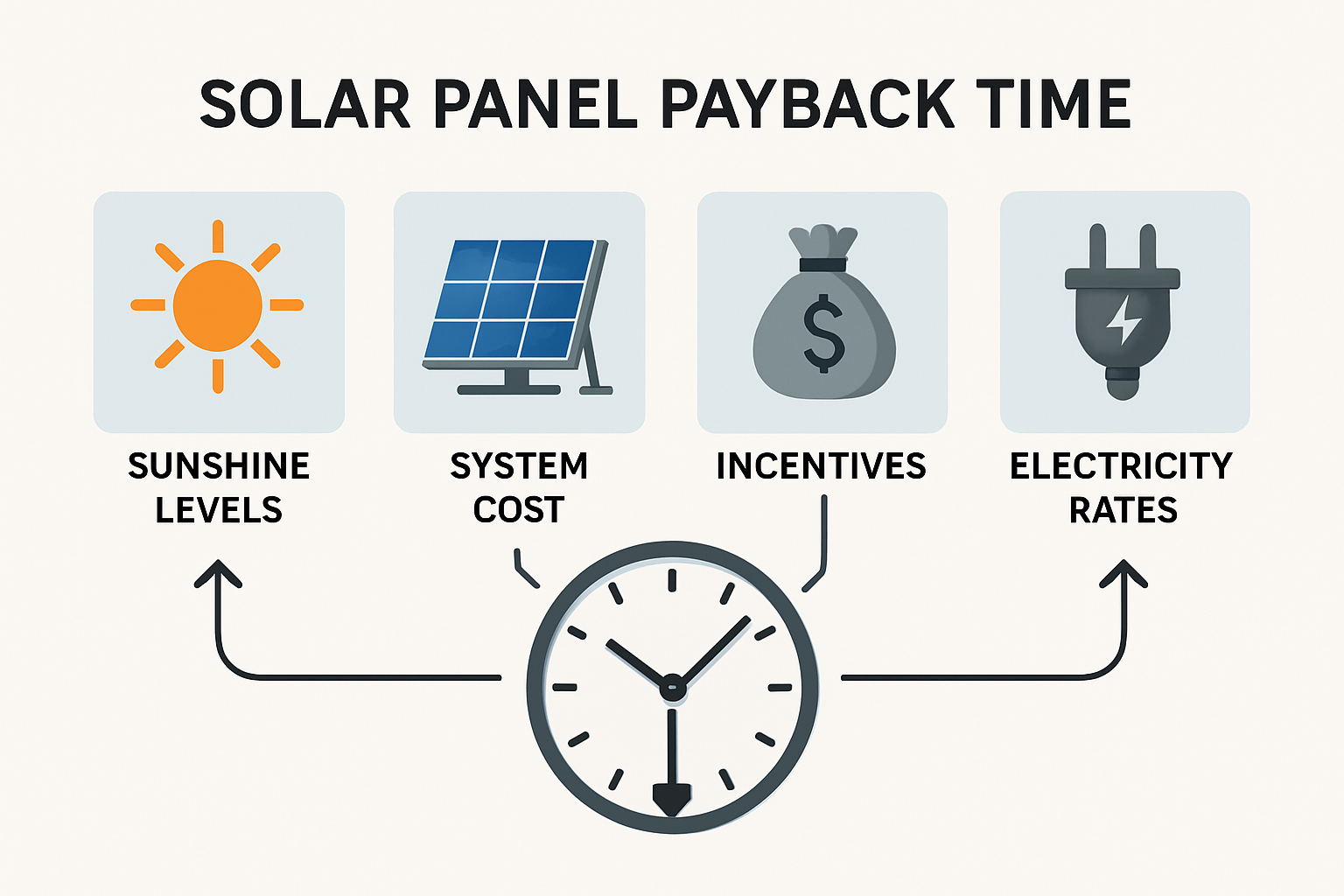Choosing a solar power system for your property involves more than just selecting solar panels. You face a fundamental decision: connecting to the utility grid or achieving complete energy independence. Both grid-tied and off-grid solar solutions offer distinct advantages and disadvantages, particularly when considering initial costs and the time it takes to recoup your investment. This discussion will help you understand the financial implications and operational differences, guiding you toward an informed decision for your energy needs.

Understanding Grid-Tied Solar Systems
Grid-tied solar systems represent the most common type of solar installation for homes and businesses. These systems connect directly to your local utility grid, allowing you to draw electricity when your solar panels are not producing enough power and send excess electricity back to the grid when production is high. This exchange typically happens through a mechanism called net metering, where your utility credits you for the energy your system contributes.
How Grid-Tied Systems Operate
A grid-tied system primarily consists of solar panels, a hybrid inverter, and a connection to the utility grid. The solar panels convert sunlight into direct current (DC) electricity. The solar inverter then transforms this DC electricity into alternating current (AC) power, suitable for use in your home and for feeding into the grid. When your solar production exceeds your immediate consumption, the surplus power flows to the grid, often earning you credits or payments. When your panels are not generating power, such as at night or on cloudy days, you automatically draw electricity from the grid. This seamless integration ensures a consistent power supply without the need for extensive battery storage.
Cost Components and Typical Payback
The cost of a grid-tied solar system includes solar panels, the inverter, mounting hardware, wiring, and installation labor. Soft costs, such as permitting, inspection, and customer acquisition, also contribute significantly to the overall price. The U.S. Department of Energy's (DOE) Solar Futures Study indicates that distributed photovoltaic (PV) systems, like rooftop solar, had a benchmark upfront system cost in 2020. This study also highlights that a 95% decarbonized grid can be achieved by 2035 with no impact on electricity prices through technological advancements.
The payback period for grid-tied solar systems varies widely, influenced by factors such as local electricity rates, available incentives (like federal tax credits or state rebates), and the amount of sunlight your location receives. Many homeowners find that their grid-tied systems can pay for themselves within 5 to 10 years. For instance, in 2024, solar photovoltaics (PV) were, on average, 41% cheaper than the lowest-cost fossil fuel alternatives, making them a highly competitive energy source.
Exploring Off-Grid Solar Systems
Off-grid solar systems offer complete independence from the utility grid. These solutions are ideal for remote properties, farms, or cabins where grid connection is unavailable or prohibitively expensive. An off-grid system requires careful planning to ensure it meets all your energy demands.
How Off-Grid Systems Work
An off-grid solar system includes solar panels, a charge controller, a battery bank, and an off-grid inverter. Solar panels generate electricity, which the charge controller regulates before storing it in the battery bank. The battery bank, often composed of high-performance, safe, and reliable lithium iron phosphate (LiFePO4) batteries, serves as your primary power reservoir. The off-grid inverter then converts the stored DC power from the batteries into usable AC electricity for your home. This setup ensures you have power available even when the sun is not shining, providing true energy autonomy. Some advanced home energy storage systems integrate lithium batteries, hybrid inverters, and solar panels into a single unit for streamlined energy management.
Cost Components and Payback Considerations
The initial investment for an off-grid system is generally higher than for a grid-tied system due to the necessity of a large battery bank and, often, a backup generator. Battery storage is a significant cost component, though the price of such systems continues to decline. According to the International Renewable Energy Agency (IRENA), hybrid systems combining solar PV with battery storage are increasingly deployed to enhance grid flexibility and reduce curtailment, demonstrating the growing viability of integrated solutions.
The payback for an off-grid system is not solely financial. While the upfront cost is higher, the long-term savings from avoiding utility bills and connection fees can be substantial. For properties without existing grid access, an off-grid system can be more economical than paying for costly grid extensions. The true "payback" for off-grid users often includes the value of energy independence, reliability, and environmental benefits.
Direct Cost Comparison and Payback Factors
Comparing grid-tied and off-grid solar systems involves evaluating both financial and non-financial aspects. Understanding the differences in initial investment and the factors influencing long-term returns is crucial.
Initial Investment Differences
The table below provides a general comparison of initial costs for typical residential solar installations. Please remember that these are estimates, and actual costs vary by location, system size, and specific components.
| Component/Category | Grid-Tied Solar System (Typical) | Off-Grid Solar System (Typical) |
|---|---|---|
| Solar Panels | Primary component | Primary component |
| Inverter | Hybrid or String Inverter | Off-Grid Inverter |
| Battery Storage | Optional, for backup or self-consumption optimization | Required, large capacity (e.g., LiFePO4 batteries) |
| Charge Controller | Not typically needed | Required, for battery management |
| Backup Generator | Not typically needed | Often recommended for extended cloudy periods |
| Installation & Soft Costs | Significant portion of total cost | Higher due to complexity and additional components |
| Grid Connection Fees | Yes, ongoing utility charges | None, complete independence |
| Overall Initial Cost | Lower | Higher |
The total installed cost for utility-scale solar projects saw an 11% decrease year-on-year in 2024, reaching $691/kW, and an 87% decrease since 2010. While these figures are for utility-scale, they reflect broader trends in component cost reductions that benefit residential systems as well. However, for residential PV, interconnection bottlenecks and higher balance-of-system costs can limit further cost reductions in some regions, such as the United States and the European Union.
Factors Influencing Payback
- Electricity Rates: Higher local electricity rates shorten the payback period for grid-tied systems, as you save more by generating your own power. For off-grid systems, high rates make the alternative (grid connection) less appealing, increasing the perceived value of independence.
- Incentives and Rebates: Government incentives, such as tax credits or feed-in tariffs, significantly reduce the net cost of solar installations and accelerate payback. These policies often favor grid-tied systems, but some regions offer incentives for battery storage that can benefit off-grid setups.
- Energy Consumption: Your household's energy usage directly affects system sizing and, therefore, cost. Larger systems to meet higher demand mean higher upfront costs.
- System Performance: The efficiency of your solar panels and inverter, along with local sunlight availability, determines how much electricity your system generates. Optimal performance leads to greater savings and a faster payback.
- Energy Independence Value: For off-grid systems, the value of not relying on a utility, avoiding outages, and living sustainably can outweigh purely financial payback calculations. The International Energy Agency (IEA) emphasizes that future approaches need to factor in the "system value" of renewable energy, which includes benefits beyond just the levelized cost of electricity.
Choosing the Right Solar Path for You
Deciding between a grid-tied and an off-grid solar solution depends on your individual circumstances, energy goals, and long-term vision for your property's power supply.
Assessing Your Needs
Consider your location first. If you are in an urban or suburban area with reliable grid access, a grid-tied system often provides the most cost-effective path to clean energy. You gain the benefits of solar power while maintaining the security of grid backup. If your property is remote, or you prioritize complete self-sufficiency, an off-grid solution could be your best option. Evaluate your energy consumption patterns. A detailed energy audit helps in accurately sizing your system, preventing both overspending on excess capacity and underspending, which could lead to power shortages.
Practical Considerations and Future Trends
Grid integration continues to improve, making grid-tied systems more resilient and responsive. Efforts by organizations like the U.S. Department of Energy's (DOE) SunShot Initiative have focused on making solar technology easily and efficiently integrated into the electric grid, and capable of providing power at all hours. This includes research into advanced inverters and streamlined interconnection procedures. For those considering grid-tied systems, the ability to sell excess power back to the grid (net metering) can significantly impact your financial returns. The role of retail electricity pricing is a key factor guiding investment in distributed solar PV.
For off-grid scenarios, advancements in battery technology, particularly LiFePO4 batteries, offer enhanced safety, longer lifespans, and improved performance, making energy storage more practical and affordable. The cumulative electricity storage deployment has seen significant growth, reflecting increasing confidence and investment in these technologies. Our expertise in lithium battery manufacturing and integrated energy storage systems (ESS) provides reliable and scalable energy solutions designed for various applications, helping clients achieve true energy independence.
Your Energy Future
The choice between off-grid and grid-tied solar systems involves weighing initial investment against long-term savings, energy security, and personal values. Grid-tied systems offer a balance of cost-effectiveness and grid reliability, while off-grid systems provide unparalleled energy independence. Both approaches contribute to a sustainable energy future. By carefully assessing your specific needs and leveraging advancements in solar and energy storage technologies, you can confidently power your property and contribute to a more resilient energy landscape.





Leave a comment
All comments are moderated before being published.
This site is protected by hCaptcha and the hCaptcha Privacy Policy and Terms of Service apply.